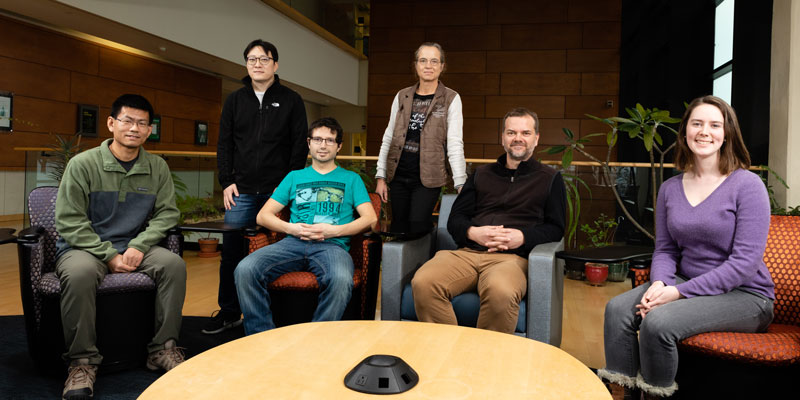Researchers are tracking down the genetic roots of a process that could lead to more efficient production of biomass fuels.

Over the course of evolutionary history, a small group of fungi decided to go their own way. These rebels cast off the standard wood-eating method of their peers in favor of a better trick — and researchers at the University of Minnesota’s College of Biological Sciences want to know how it’s done.
The process, known as “brown rot,” allows fungi to selectively draw sugars out of wood and turn them into energy without breaking down the rigid material around it. Now, supported by a three-year, $1.5 million US Department of Energy grant, CBS researchers and collaborators from Clark University in Massachusetts, the Joint Genome Institute in California, and the Pacific Northwest National Laboratory in Washington State aim to figure out the genetic source of this process to better understand its role in nature and potentially harness it for more efficient, sustainable energy from plants.
“Essentially, brown rot fungi ‘loosen’ everything up in wood and then suck out the carbohydrates,” said Jonathan Schilling, professor in the Department of Plant and Microbial Biology and lead principal investigator on the project. “The key question is, how do they do this?”
In addition to Schilling, the CBS team includes two co-principal investigators: Claudia Schmidt-Dannert, Distinguished McKnight professor in the Department of Biochemistry, Molecular Biology, and Biophysics, and Jiwei Zhang, post-doctoral fellow in the Department of Plant and Microbial Biology.
Only about 7 percent of fungi in North America perform brown rot, and it’s more common in northern areas like Minnesota. Despite its current scientific appeal, the process has long vexed the lumber industry, as it tends to leave wood far too weak and brittle to use, even though it looks normal from the outside.
Figuring out brown rot’s genetic roots means studying the “gray areas” in fungal DNA — where scientists haven’t yet determined what function genes play. By referencing previous research and comparing the different lineages of fungi that developed brown rot, Schilling and his team narrowed this gray area down to 34 mystery genes.
“Some of these may remain unknown or prove to serve a more routine function,” he said. “Others will likely come through as important, or even be the key to the brown rot process.”
To find out what the genes do, Schmidt-Dannert will insert them into the DNA of other fungi, including Trichoderma reesei, a fast-growing fungi that has been a “workhorse” in industry processes for decades. Trichoderma can’t normally perform brown rot — but what if it could be engineered to be more like brown rot fungi? If the researchers uncover the gene or genes that let it, they will be a step closer to a faster, more reliable, and more cost-effective way to harvest the sugars in wood and ferment them to create fuel.
As an additional benefit, brown rot leaves the lignin in wood — responsible for its rigid structure — untouched as the sugars are drawn out, saving it for other uses. That might be useful to make other things, adding value. And while wood is typically where brown rot is found in nature, the process could likely be used with a much wider range of biomass.
“Doing this fungal trick of selective plant sugar extraction would allow us to get more value out of the plant,” Schilling said. “And, potentially, all plant tissues could be eligible for this more efficient process.” –Kevin Coss